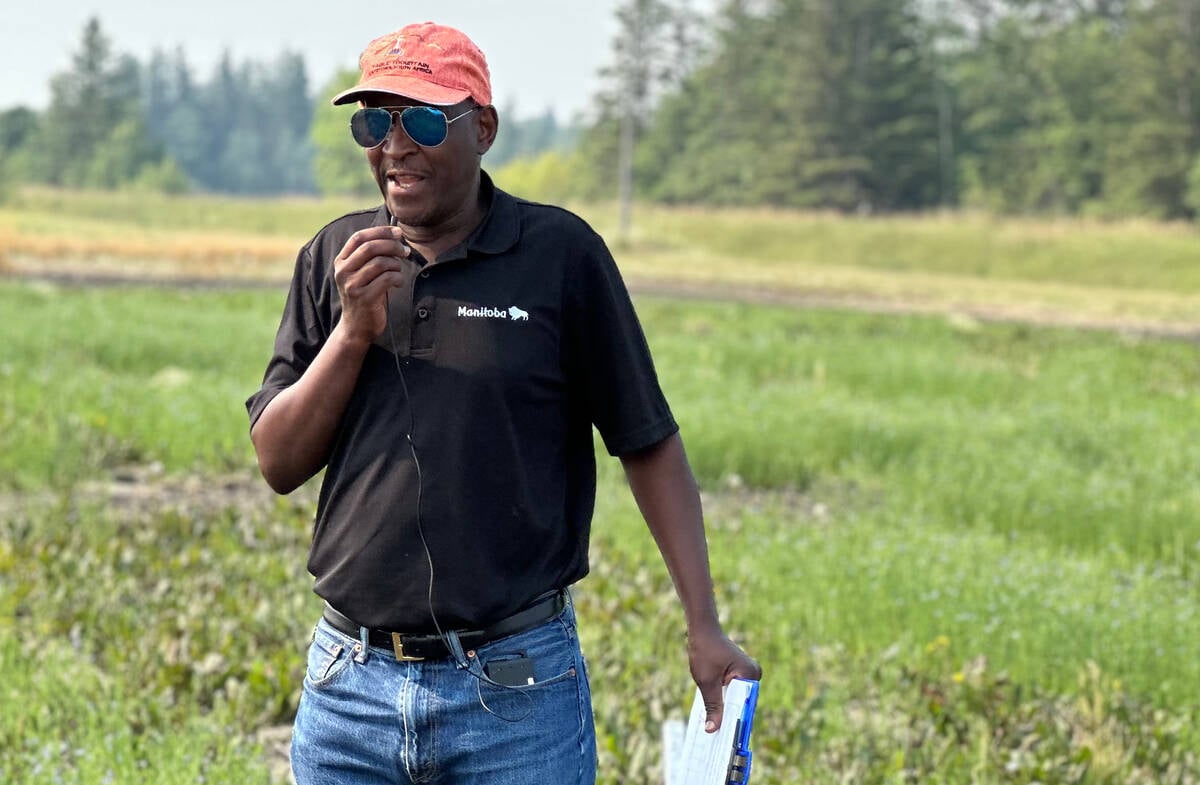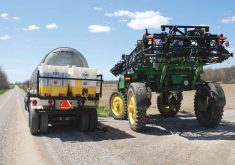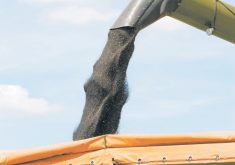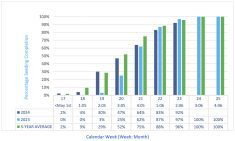First-time canola straight cutters might want to take another look at their combine settings.
“When we’re comparing picking up a windrow to straight cutting, we, again, want to kind of treat this like a different crop,” Angela Brackenreed of the Canola Council of Canada stressed during a recent Manitoba Agriculture webinar. “The same combine setting might work, but chances are it won’t.”
Machinery options and settings have earned increased interest for researchers as straight cutting rises in popularity. New shatter-resistant canola varieties are hitting the market and producers look to mechanical options to further limit one of the main concerns with straight cutting, harvest loss.
Read Also

How much nitrogen can farmers really cut?
Manitoba fertilizer trials look for nitrification inhibitor sweet spot, to lower greenhouse gas emissions and cost without hurting yield.
The mechanical quirks of straight cutting, have sparked a number of studies by the Prairie Agricultural Machinery Institute (PAMI). The organization has since merged those results into a straight-cutting guide, available from its website.
Among other suggestions, PAMI has urged producers to keep reels “as far back as possible, while still ensuring good feeding,” and to avoid more aggressive finger settings as long as a crop is upright, setting fingers so they are vertical or only slightly forward pointing when lifting out of the crop.
“In a well-standing crop, reel has a minimal role in feeding, especially on the auger head,” the guide says. “Have reel fingers set so they just engage the crop.”
PAMI found substantial loss when reels were set too low.
Brackenreed backed up that advice, although both she and PAMI noted those recommendations might still depend on year.
“You want to run that reel the travel speed of the combine,” Brackenreed said. “With an auger header, you almost don’t need to use a reel at all in most crop conditions, so keep it as high and as far back as possible.
“Draper headers are certainly more sensitive to reel position, so I would recommend just keep it up as you get into the crop, drop it in and kind of see where you need it and how much reel activity you need,” she added.
Farmers should also be watching their rotor speed and concave clearance.
“With our rotor and our concave settings, with big crops and green straw, it is more likely or more probable that this could be our primary loss point,” Brackenreed said.
“I’m always hesitant to talk about stuff like this because I don’t want people just to assume that’s always going to be the case,” she cautioned. “We need to certainly trial and error every year.”
The Canola Council of Canada calls for a tighter clearance and faster rotor.
Farmers cited rotors as a main point of loss last year, the agronomy specialist said, prompting rotor speeds up to 900 r.p.m. and tighter concaves to address the problem.
“If you end up in a scenario like that, then you need to start watching for cracked seed,” she said.
Overthreshing is also still a risk, PAMI warns, and overthreshed green straw can tie up power and overload the shoe.
Conversely, Brackenreed said, farmers may be able to ease up on fan speed, since there is less material to break down.
Other settings might depend on the type of header on the combine, the PAMI guide reads. Farmers with a draper header may need to be more aggressive with their cross auger settings, the organization noted, or risk uneven feeding. PAMI suggests a lower, more forward auger if canola is bunching between the reel and auger, since that will press plant matter against the draper.
Slower table speed also did little to help centre losses in rigid or extended knife headers, although PAMI had only conducted one year of research before coming out with the guide.
Unlike Brackenreed, PAMI does suggest that farmers use the same settings for the first attempt at straight cutting, before adjusting as needed.
Brackenreed also urged farmers to “take it slow,” particularly when opening up a field and getting a feel for conditions, or risk plugging their machine.
“(It’s) really important that we don’t go guns blazing when we get into a straight-cut field and expect that this is going to be like picking up a windrow,” she said.
















